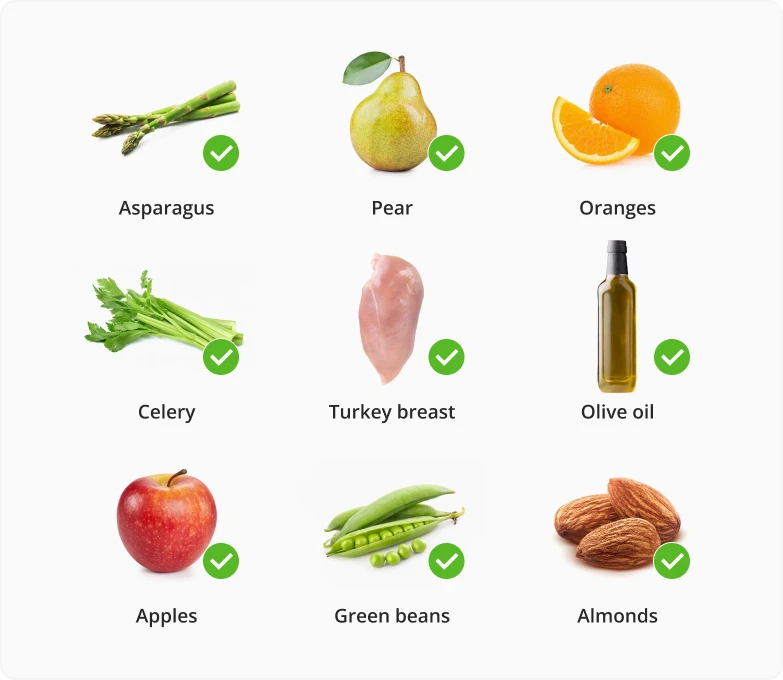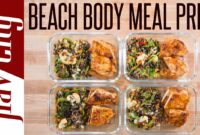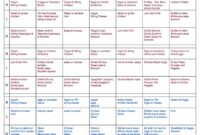South Beach Diet snacks offer a delicious and effective way to manage weight and improve overall health. This guide delves into the principles of the South Beach Diet, highlighting the importance of choosing snacks that are low-glycemic, high in protein and fiber, and portion-controlled. We’ll explore a variety of snack options, provide recipe ideas, and address common challenges faced while adhering to this popular diet plan. Understanding the nuances of snack selection within the South Beach Diet framework is crucial for long-term success.
We’ll cover everything from creating a weekly shopping list and meal plan to understanding the visual appeal of healthy snacks and how it impacts dietary choices. This comprehensive guide aims to empower you with the knowledge and tools needed to make informed decisions about your snacks, ensuring a satisfying and sustainable journey towards your health goals.
Understanding the South Beach Diet
The South Beach Diet, unlike many restrictive diets, focuses on sustainable weight loss through mindful food choices and balanced macronutrient intake. It emphasizes the quality of carbohydrates consumed rather than simply restricting calories. This approach aims to minimize blood sugar spikes and cravings, leading to long-term weight management and improved overall health.
The core principle of the South Beach Diet is to prioritize nutrient-rich foods while limiting those that cause rapid blood sugar fluctuations. This involves selecting foods that are low in glycemic index (GI), meaning they don’t cause a sudden surge in blood sugar. The diet also encourages the consumption of healthy fats and lean proteins to keep you feeling full and satisfied, reducing the likelihood of overeating.
Phases of the South Beach Diet and Snack Guidelines
The South Beach Diet is structured in three phases, each with specific guidelines for snacking. Understanding these phases is crucial for successfully following the diet and achieving its goals.
Phase 1: The first two weeks is the most restrictive phase. The goal is to jumpstart weight loss by eliminating high-glycemic carbohydrates, such as white bread, sugary drinks, and processed foods. Snacks during this phase should be limited to those that are low in carbohydrates and high in protein or healthy fats. Examples include a small handful of almonds, a hard-boiled egg, or a few slices of cheese.
Phase 2: Transition phase This phase gradually reintroduces some healthy carbohydrates, such as whole grains and fruits, while still maintaining a focus on lean protein and healthy fats. Snack choices expand to include options like air-popped popcorn, berries, or a small serving of Greek yogurt.
Phase 3: Lifetime Maintenance Once the weight loss goal is achieved, this phase focuses on maintaining a healthy weight through balanced eating habits. Snacking remains an important part of the plan, but choices should continue to emphasize whole, unprocessed foods. Examples of appropriate snacks include a piece of fruit with a small amount of nut butter, vegetable sticks with hummus, or a small portion of trail mix.
Comparison of the South Beach Diet to Other Popular Diets
The South Beach Diet differs significantly from other popular diets in its approach to carbohydrate consumption. Unlike low-carb diets that completely restrict carbohydrates, the South Beach Diet focuses on selecting high-quality, low-glycemic carbohydrates. This contrasts with diets like ketogenic diets, which severely restrict carbohydrate intake, prioritizing fat as the primary energy source.
Compared to diets that emphasize calorie restriction, the South Beach Diet emphasizes the quality of food over the quantity. It prioritizes satiety and sustained energy levels, reducing the likelihood of feeling deprived and increasing adherence. The South Beach Diet also differs from fad diets which often promote rapid weight loss through extreme measures, often unsustainable in the long run. The South Beach Diet, in contrast, promotes gradual and sustainable weight loss through lifestyle changes.
Identifying Suitable South Beach Diet Snacks
Choosing the right snacks is crucial for successful weight management on the South Beach Diet. This diet emphasizes low-glycemic foods to stabilize blood sugar levels and promote sustained energy, preventing those mid-afternoon cravings that can derail your progress. Selecting snacks that are both satisfying and align with the diet’s principles is key to long-term adherence.
The South Beach Diet focuses on consuming foods that are low in glycemic index (GI), high in protein and fiber, and moderate in healthy fats. This approach helps regulate blood sugar, keeps you feeling full, and supports healthy weight loss. Remember, even healthy snacks should be consumed in moderation.
Examples of Suitable South Beach Diet Snacks
The following table provides examples of healthy, low-glycemic snacks that are permissible on the South Beach Diet. It’s important to note that glycemic index values can vary slightly depending on the preparation method and specific ingredients. These values represent general averages.
| Snack | Description | Glycemic Index (GI) | Serving Size |
|---|---|---|---|
| Hard-boiled egg | A protein-packed snack, providing essential amino acids. | Low (0-55) | 1 large egg |
| Small handful of almonds | Provides healthy fats, protein, and fiber. Choose unsalted varieties. | Low (0-55) | 1/4 cup (approximately 23 almonds) |
| Cottage cheese | High in protein and relatively low in carbohydrates. | Low (0-55) | 1/2 cup |
| Greek yogurt (plain, unsweetened) | High in protein and can be combined with berries for added flavor and antioxidants. | Low (0-55) | 1 cup |
High-Protein and High-Fiber Snacks
Incorporating snacks rich in protein and fiber is particularly beneficial on the South Beach Diet. Protein promotes satiety, helping you feel fuller for longer, while fiber aids digestion and contributes to overall gut health. These nutrients work synergistically to support weight management and maintain energy levels throughout the day.
Examples include: a small serving of edamame (steamed soybeans), a handful of berries with a dollop of Greek yogurt, or a small portion of air-popped popcorn (unsalted). These options provide a balance of macronutrients, keeping you satisfied and preventing overeating.
Portion Control and South Beach Diet Snacks
Even healthy snacks can contribute to weight gain if consumed in excessive amounts. Portion control is essential for maximizing the benefits of the South Beach Diet. Paying attention to serving sizes helps you manage your calorie intake and avoid exceeding your daily dietary goals. Using measuring cups or small bowls can assist in portion control. For example, a “small handful” of nuts should be measured, rather than eyeballed, to ensure you’re sticking to the recommended serving size. Mindful eating, paying attention to your body’s hunger and fullness cues, is also a crucial component of successful portion control.
Recipe Ideas for South Beach Diet Snacks
The South Beach Diet emphasizes whole, unprocessed foods and limits refined carbohydrates and added sugars. Creating delicious and satisfying snacks that adhere to these guidelines can be surprisingly easy. The following recipes offer diverse options, showcasing how to adapt common snack ideas to fit the diet’s parameters. Remember to always check nutrition labels and adjust portion sizes to meet your individual caloric needs.
Savory Snack Recipes
Below are two savory snack recipes perfectly suited for the South Beach Diet. These recipes prioritize lean protein and healthy fats, keeping you feeling full and satisfied without derailing your progress.
- Spicy Avocado & Shrimp Lettuce Wraps: These wraps are quick to prepare and offer a vibrant mix of flavors and textures.
- Ingredients: 1 ripe avocado, mashed; 4 oz cooked shrimp, chopped; 1/4 cup chopped red onion; 2 tablespoons chopped cilantro; 1 tablespoon lime juice; 1/2 teaspoon chili powder; salt and pepper to taste; large lettuce leaves (e.g., butter lettuce or romaine).
- Instructions: Combine mashed avocado, shrimp, red onion, cilantro, lime juice, and chili powder in a bowl. Season with salt and pepper. Spoon the mixture into lettuce leaves and serve immediately.
- Cucumber Bites with Smoked Salmon and Dill: A refreshing and elegant snack option, perfect for a light lunch or afternoon pick-me-up.
- Ingredients: 1 cucumber, thinly sliced; 4 oz smoked salmon, thinly sliced; 2 tablespoons fresh dill, chopped; 1 tablespoon light cream cheese (or plain Greek yogurt for a lower-fat option).
- Instructions: Spread a thin layer of cream cheese (or Greek yogurt) on each cucumber slice. Top with a piece of smoked salmon and a sprinkle of dill.
Sweet Snack Recipes
Satisfying your sweet cravings while staying true to the South Beach Diet is achievable with the right ingredients and preparation methods. These recipes focus on natural sweetness and healthy fats.
- Berry and Almond Chia Seed Pudding: This pudding is packed with antioxidants, fiber, and healthy fats, making it a nutritious and delicious snack.
- Ingredients: 1/4 cup chia seeds; 1 cup unsweetened almond milk; 1/2 cup mixed berries (strawberries, blueberries, raspberries); 1 tablespoon almond butter; 1 teaspoon honey or maple syrup (optional, use sparingly).
- Instructions: Combine chia seeds and almond milk in a jar or container. Stir well and refrigerate for at least 2 hours, or preferably overnight, to allow the chia seeds to absorb the liquid. Before serving, stir in berries and almond butter. Add a touch of honey or maple syrup if desired.
Adapting Common Snack Recipes
Many popular snacks can be easily adapted to fit the South Beach Diet guidelines. The key is to swap out high-glycemic carbohydrates and processed ingredients for healthier alternatives. For example, instead of potato chips, opt for baked vegetable chips (e.g., zucchini, sweet potato). Replace sugary yogurt with plain Greek yogurt and add your own berries or a sprinkle of cinnamon for sweetness. Consider using whole-wheat tortillas (in moderation) for wraps instead of white flour tortillas. Remember to always be mindful of portion sizes.
Shopping List and Meal Planning
Effective meal planning and grocery shopping are crucial for successful adherence to the South Beach Diet. Pre-planning minimizes impulsive snacking on less-than-ideal foods and ensures you always have healthy, readily available options. This proactive approach simplifies the diet and enhances its effectiveness.
Sample South Beach Diet Snack Shopping List (One Week)
This shopping list provides a variety of options to keep your snacks interesting and nutritious throughout the week. Remember to adjust quantities based on your individual needs and preferences.
- Almonds (16 oz): A great source of healthy fats and protein.
- Walnuts (8 oz): Another excellent choice for healthy fats and omega-3 fatty acids.
- Hard-boiled eggs (1 dozen): A convenient and protein-rich snack.
- Greek yogurt (2 containers): Opt for plain, nonfat varieties for maximum versatility.
- String cheese (1 package): A portable and satisfying source of calcium and protein.
- Berries (2 pints): Strawberries, blueberries, raspberries – all low in sugar and high in antioxidants.
- Avocado (2): Healthy fats and fiber to keep you feeling full.
- Cucumber (1): A refreshing and low-calorie snack.
- Celery (1 bunch): Pair with almond butter or hummus for added flavor and nutrients.
- Tuna pouches (4): A quick and easy protein source.
Weekly Meal Plan Incorporating South Beach Diet Snacks
This sample plan demonstrates how to seamlessly integrate South Beach-friendly snacks into your daily routine. Remember to adjust portion sizes according to your individual caloric needs.
| Day | Breakfast | Lunch | Snack | Dinner | Snack |
|---|---|---|---|---|---|
| Monday | Greek yogurt with berries | Grilled chicken salad with avocado | Almonds (1/4 cup) | Salmon with steamed broccoli | String cheese |
| Tuesday | Scrambled eggs with spinach | Tuna salad (made with avocado mayo) | Hard-boiled egg | Lean ground turkey stir-fry | Celery sticks with almond butter |
| Wednesday | Oatmeal with berries | Leftover turkey stir-fry | Walnuts (1/4 cup) | Chicken breast with roasted vegetables | Greek yogurt |
| Thursday | Omelet with mushrooms and cheese | Salad with grilled shrimp | String cheese | Baked cod with asparagus | Berries (1/2 cup) |
| Friday | Greek yogurt with fruit | Leftover baked cod and asparagus | Hard-boiled egg | Steak with a side salad | Avocado slices |
| Saturday | Breakfast burrito (using whole-wheat tortilla, eggs, and vegetables) | Chicken Caesar salad (using light dressing) | Almonds (1/4 cup) | Pork tenderloin with green beans | Cucumber slices |
| Sunday | Pancakes made with whole-wheat flour and berries | Leftover pork tenderloin and green beans | Walnuts (1/4 cup) | Roast chicken with roasted sweet potatoes | Greek yogurt |
Benefits of Planning Snacks in Advance
Planning snacks ahead of time significantly reduces the likelihood of making unhealthy food choices when hunger strikes. Spontaneous snacking often leads to less nutritious options due to convenience. Having pre-portioned and readily available healthy snacks eliminates this temptation, promoting consistent adherence to the diet and achieving your weight loss goals. For example, imagine the difference between having a bag of chips readily available versus a container of pre-portioned almonds. The almonds provide sustained energy and nutrients, while the chips offer only a temporary sugar rush followed by a crash, potentially leading to further unhealthy snacking.
Visual Representation of Snack Options
The visual appeal of food significantly impacts our eating habits. A vibrant, appealing snack is more likely to be chosen over a less attractive one, even if both are equally healthy. Understanding this principle is key to successful adherence to the South Beach Diet. By focusing on creating visually enticing snacks, we can make healthy eating more enjoyable and sustainable.
Detailed Descriptions of South Beach Diet Snacks
Let’s examine three examples of South Beach Diet-friendly snacks, highlighting their visual characteristics. First, consider a handful of almonds. Their color ranges from a creamy beige to a rich brown, depending on the variety. The texture is firm yet satisfyingly crunchy, and the aroma is subtly nutty and earthy. The visual appeal of their natural, unprocessed appearance contributes to a feeling of wholesome indulgence. Secondly, imagine a small bowl of sliced cucumber with a sprinkle of fresh dill. The vibrant green of the cucumber contrasts beautifully with the lighter green of the dill. The texture is crisp and refreshing, and the aroma is subtly herbaceous and cool. The bright colors instantly evoke feelings of freshness and lightness. Finally, picture a small serving of cottage cheese topped with a few chopped chives. The cottage cheese is a creamy off-white, while the chives add flecks of bright green. The texture is smooth and creamy, with a slight tangy aroma. The visual simplicity is pleasing and suggests a light, healthy option.
Visually Appealing Platter of South Beach Diet Snacks
For a party or social gathering, a visually stunning platter of South Beach Diet snacks can be easily created. Imagine a large, rustic wooden board laden with an array of colorful and textured items. One section might feature an assortment of colorful bell peppers (red, yellow, orange) cut into strips, alongside cherry tomatoes. These provide a vibrant splash of color and a pleasing contrast in texture. Another section could showcase a selection of nuts (almonds, walnuts, pecans) offering variations in color and shape. A small bowl of hummus, a creamy beige color, could be placed in the center, accompanied by carrot sticks and celery sticks for dipping. The contrasting colors and textures make the platter inherently appealing, encouraging guests to select healthy options without feeling deprived. The overall effect should be one of abundance and variety, emphasizing the deliciousness of healthy choices.
Utilizing Visual Cues for Healthier Snack Selection
To effectively use visual cues to choose healthier snacks, prioritize vibrant colors and natural appearances. Snacks that appear overly processed, with artificial colors or unusual textures, should be approached with caution. Look for foods that showcase their natural ingredients. For example, a piece of fruit with its natural skin intact will often be more appealing and nutritious than a processed fruit snack bar. Similarly, opting for whole nuts over heavily salted or candied nuts will not only be healthier but also visually more appealing due to their natural color and texture. Focusing on the visual aspects of food can be a powerful tool in making mindful and healthy snack choices.
Final Summary
Successfully navigating the South Beach Diet requires mindful snacking. By understanding the core principles, choosing appropriate snacks, and planning ahead, you can effectively manage cravings and maintain a healthy eating pattern. Remember, portion control and selecting nutrient-rich options are key to achieving your weight management goals and feeling your best. This guide provides a solid foundation for making informed choices and enjoying delicious, diet-friendly snacks along the way.




